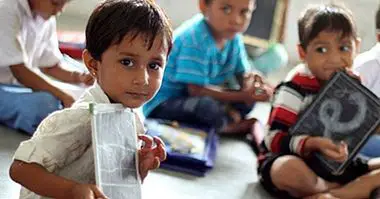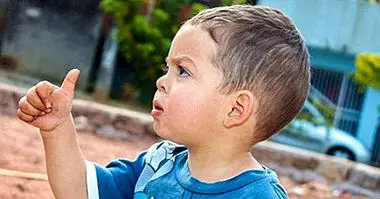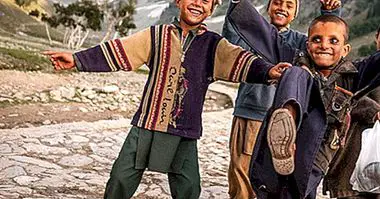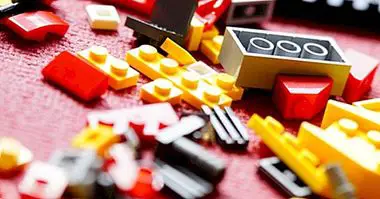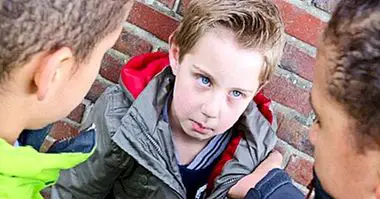Being a child in today's society: myths about childhood
Much of the literature published today focuses on the difficulty that today's parents have when it comes to to deal with, educate, treat and manage the relationship with children . They seem to be more frequent than in the past, the paternal-filial conflicts and the feeling that the parents are "overcome" due to the bad behavior of their children.
However, another equally relevant issue would be to consider the perspective and the own experience that the child himself has about passing through the stage of childhood in the current era, which we will analyze below and may be more complex to handle than what You could think. It is convenient to discard certain myths about childhood to understand the psychology of the little ones well.
- Related article: "The 6 stages of childhood (physical and psychic development)"
Social changes that today influence children's development
Urra (2007) makes an interesting analysis of the factors that have been modified in today's society and that may be influencing how children develop psychologically at present.
1. Permissiveness
Today's society is more permissive than in previous decades , when a more authoritarian structure prevailed (for example, the government dictatorships predominant in the West during much of the twentieth century). On the other hand, the values that seem to be transmitted in recent times, perhaps as a reactionary response to submission to the indicated authority, are related to materialism, individualism, consumerism, hedonism or relativism.
- Related article: "Positive discipline: educating from mutual respect"
2. Exposure to adult content
A large volume of media content is aimed at violent, sexual programs that promote success based on purchasing / economic power, competitiveness, etc. To what must be added the amount of time children spend in front of the television, Internet , social networks, video games, etc., alone and without the supervision of an adult who can instruct them for an adequate use of them.
3. The current life is frenetic
The change in the style and rhythm of personal life. Parallel to the advance of technologies, the pace of life has accelerated in such a way that a "stopwatch" operation has been internalized in which the individual must perform as many activities and tasks throughout the day. There is a concept called "child agenda" proposed by the same author that is used to designate children who combine school attendance with an endless list of extracurricular activities and obligations.
4. Liberalization of the family model
The family structure has been altered respect to previous generations. Today single-parent, heterosexual, homosexual, reconstructed families derived from previous divorces, etc. are observed. The variety has generated different forms of family organization that affects the type of education that the progeny receive.
On the other hand, more "intrafamiliar" than "extrafamilial" life is currently being carried out: contact with grandparents, uncles, cousins, etc. has been reduced since parents and children have less time to do so and, therefore, limit family life to members who live together.
5. Abandonment of responsibilities
The abandonment of the role of some fathers / mothers, by which the sample of affection or love is confused by gifts and material rewards combined with unlimited permissiveness with the educational role that theoretically would be attributed to the parents (offering of time, dedication, dialogue , active listening, support, sharing experiences, setting standards, guidelines and limits, teaching values, etc.).
6. Questioning of educational styles
The educational discrepancy between the families, being able to differentiate between the application of permissive, authoritarian, negligent, overprotective, etc. styles. In addition, the differences between families and teachers also seem to be more evident, creating a climate of questioning or distrust of the teaching figure in the event of possible sanctions applied to the student).
Misconceptions and myths about childhood
Some of the main myths about the psychology of children that are held today are the following.
1. Psychological essentialism
There is a type of belief shared by some of the parents "overcome" by the misbehavior of the children regarding the presence of an intrinsic evil in the child that leads him to commit the behaviors of loss of respect, rebellion, defiance and disobedience. Nothing is further from reality.Up to the stage of youth and beginning of adulthood (towards 24-25 years) the individual does not have a complete development of all brain structures that allow him to exercise a deep reasoning about his own acts or to behave in a mature way, ethical, civilized, empathic; these structures are known as the prefrontal cortex.
The minor, therefore, he does not have that capacity that is attributed to him to embitter existence consciously and premeditated parents, because in these ages the child does not know very well what is right or appropriate in a given situation; is learning to do it Therefore, it seems unfair to think that the child should behave like "an adult in miniature"; the child is a boy
2. Learning does not model personality
Related to the above, it does not seem right either to conclude that the child behaves in a certain inappropriate way because "it has come out like this" .
It is true (already in late childhood and adolescence) that the ultimate responsible for the behavior is the one who performs it and that there is a difference in temperament that discriminates between more serene or more "moved" individuals, but it is no less true than given that the child is in constant learning the environment presents a determining role in behavioral modeling of the child.
Thus, the interaction between personal factors (internal or personal) and factors derived from the context (external factors, such as the type of family and education received) are the causes of the behavior that the children finally exhibit. In this sense, the different educational styles (democratic, authoritarian, permissive or negligent) have a determining influence.
3. Affection has its price
Another idea that some parents frequently apply is the fact that it is possible to think generate the children's feeling of affection for them through material rewards , as discussed above. Contrary to what may seem, children are equally happy with half or a quarter of the money that parents invest on the pretext of contentment of the children.
Research and analysis of a large number of interviews and testimonies carried out in the last decade indicate that young people value much more than concrete material rewards the time and attention that their parents dedicate to them on a day-to-day basis .
Active listening, dialogue, joint decision making, shared activities, an empathic and understanding attitude before the difficulties that may arise in both parts, etc., are aspects that count to a much higher extent than the fact of making available the latest console model in the market.
conclusion
The preceding lines are intended to be a set of reflections that, in certain cases, can help the parents to understand more deeply the reasons why the behavior of your little one is not the expected . By analyzing the erroneous beliefs indicated, daily situations of conflict can be resolved in alternative ways, in which the application of empathic capacity can be of vital importance.
Bibliographic references:
- Urra, J. (2007). The little dictator. The sphere of Books: Madrid.


